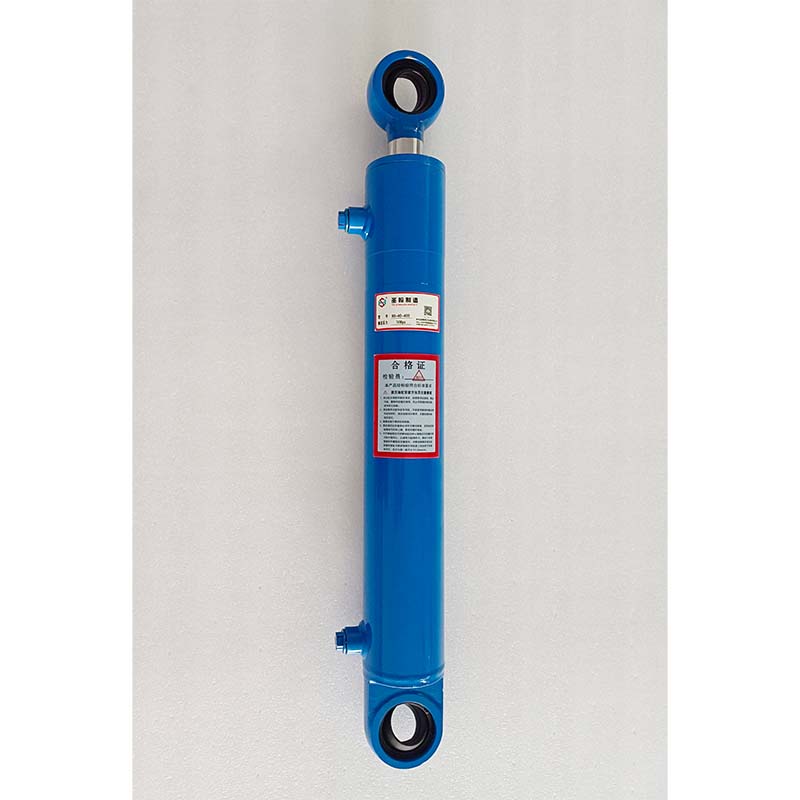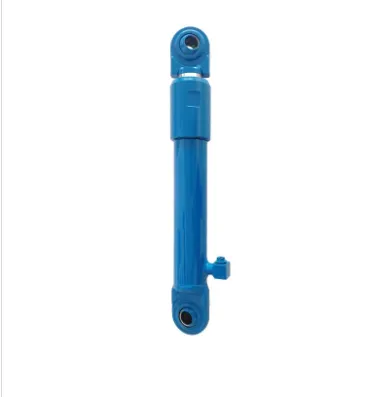jun . 09, 2025 08:23 Back to list
Premium Snowplow Power Units - Durable & Efficient
- The Essential Role and Core Technologies of Snowplow Power Units
- Performance Metrics and Productivity Specifications
- Industry-Leading Manufacturers and Technical Comparisons
- Application-Specific Customization Capabilities
- Operational Case Studies Across Diverse Environments
- Future Innovations in Power Unit Engineering
- Operational Considerations When Selecting Snowplow Power Units

(snowplow power unit)
What Are Snowplow Power Units and How Do They Drive Winter Operations?
Snowplow power units serve as the fundamental component enabling efficient snow removal across transportation networks. These integrated hydraulic power systems convert vehicle engine power into controlled hydraulic pressure for precise blade manipulation, adjustable wing positioning, and salt spreader operation. Unlike standard vehicle engines, specialized power units maintain consistent hydraulic output at temperatures as low as -40°F, ensuring uninterrupted performance during extreme winter events where average downtime costs municipalities $12,800 per hour.
Industrial-grade pumps produce between 25-45 GPM flow rates optimized for rapid cylinder response while maintaining pressures of 2,500-3,500 PSI. This hydraulic precision allows operators to adjust blade angles within 1.5 seconds—critical when clearing airport runways requiring FAA-mandated clearance within strict timeframes. Thermal management systems prevent fluid viscosity issues that plague conventional hydraulics, with patented heat exchangers maintaining optimal fluid temperatures even during prolonged idling conditions common in municipal operations.
Evaluating Performance Metrics That Impact Snow Removal Efficiency
Key performance indicators directly determine fleet productivity during winter storms. Hydraulic flow rates significantly impact operational speed—systems generating 35+ GPM enable plows to maintain 25-30 MPH clearing speeds versus sub-25 MPH with lower-capacity units. Power units equipped with intelligent load-sensing technology demonstrate 18% faster route completion than fixed-displacement models, according to DOT comparative studies. This technology also reduces fuel consumption by 22% during variable-load operations like bridge clearing and curb-line stacking.
| Specification | Standard Units | High-Performance Units | Premium Custom Builds |
|---|---|---|---|
| Hydraulic Flow Rate | 22-28 GPM | 30-38 GPM | 42-50 GPM |
| Maximum System Pressure | 2,500 PSI | 3,200 PSI | 3,500-4,000 PSI |
| Cold Start Capability | -25°F | -40°F | -45°F |
| Blade Reaction Time | 2.8 seconds | 1.9 seconds | 1.3 seconds |
| Noise Level Reduction | 84 dBA | 78 dBA | 71 dBA |
Comparative Analysis of Major Power Unit Manufacturers
Industry leaders offer distinct advantages tailored to operational requirements. Northern Factory systems dominate municipal markets with modular designs featuring standardized SAE connections across their product range, enabling fleet-wide compatibility. Conversely, Hiniker Power Systems specialize in extreme-environment units for mining operations, incorporating triple-sealed bearings and volcanic-ash filtration tested under ISO 5011 dust standards.
Blizzard Corporation's patented thermal management technology extends fluid service intervals to 1,000 hours—double the industry average. Meanwhile, Meyer Engineering leverages aerospace-grade materials in its premium line, reducing total system weight by 40 pounds while maintaining 4,000 PSI operational pressure. For specialized applications, custom fabrication facilities like Douglas Dynamics' Johnson Manufacturing division create FAA-compliant units meeting strict electromagnetic interference standards for airport snowplow power unit
configurations.
Tailored Engineering Solutions for Specialized Applications
Custom snowplow power units solve unique operational challenges through engineered modifications. Mountainous terrain operations require enhanced pump compensation valves maintaining consistent blade pressure during descent gradients exceeding 12%, preventing blade lift that creates hazardous ice layers. Highway departments increasingly adopt salt brine applicators integrated directly with hydraulic power take-offs, allowing spray pattern adjustments from cab controls without additional power sources.
Heavy-duty configurations for mining operations feature auxiliary cooling systems mitigating hydraulic fluid thermal breakdown in 24-hour continuous operation. Recent innovations include electromagnetic compatibility shielding for airport units preventing interference with instrument landing systems, and explosion-proof certified hydraulics for refineries where sparks pose ignition risks. These application-specific adaptations typically increase initial investment by 15-25% but yield 300-500% ROI through extended service life in specialized environments.
Documented Success Stories in Extreme Winter Conditions
Real-world operational data demonstrates power unit reliability under severe conditions. After upgrading to custom high-flow snowplow power units, the Colorado DOT achieved 23% faster I-70 mountain corridor clearance during 2022's record 14-foot snowfalls. Each plow maintained hydraulic functionality throughout 18-hour continuous operations with zero system failures reported across the 32-unit fleet. Similarly, Toronto Pearson International documented 42% reduction in runway downtime after implementing FAA-compliant units with rapid deployment capabilities.
Commercial operators like Midwest Trucking Solutions reduced their hydraulic maintenance costs by 37% annually following conversion to advanced filtration systems. Their logging road plows operate 47 days annually in conditions where particulate contamination previously caused pump failures every 120-150 operational hours. Additionally, Minnesota's statewide municipal purchasing program reported $3.2 million saved over five years through standardized snowplow power unit specifications reducing component inventories across 214 maintenance facilities.
Emerging Innovations in Hydraulic Power Technology
Near-future advancements will transform snowplow hydraulic performance. Electro-hydraulic hybrid systems currently in field testing reduce engine load by integrating electric pumps for auxiliary functions, potentially cutting fuel consumption by an additional 18-22%. Self-monitoring units with embedded IoT sensors will provide real-time viscosity analysis and predictive maintenance alerts, potentially extending service intervals beyond 1,200 operational hours.
Material science breakthroughs include graphene-reinforced composite reservoirs reducing weight while improving impact resistance in subzero conditions. Major manufacturers including Western Products and Buyers Products Company now integrate CAN bus compatibility for digital control interface standardization. Research universities partnered with leading snowplow power unit factories are developing phase-change thermal batteries that absorb excess heat during operation and release warmth during cold starts, eliminating the need for conventional block heaters.
Selecting the Optimal Snowplow Power Unit Configuration
Choosing appropriate snowplow power units requires evaluating operational priorities. For frequent users facing prolonged exposure to corrosive materials, stainless steel construction justifies premium pricing through tripled service life in salt-heavy environments. Operators requiring fast blade cycling for complex urban routes should prioritize proportional valve responsiveness over maximum pressure specifications.
Consider hydraulic flow redundancy through dual-pump setups for critical infrastructure routes where operational continuity proves essential. Many departments now install quick-disconnect hydraulic interfaces enabling rapid power unit replacement in under 45 minutes during emergency breakdowns. Leading manufacturers provide configuration tools accounting for blade width, vehicle horsepower, and operational temperatures to match hydraulic components appropriately. Verification of third-party certifications including SAE J2889 durability validation remains essential when evaluating technical specifications from snowplow power unit companies.

(snowplow power unit)
FAQS on snowplow power unit
Q: What types of snowplow power units does your factory produce?
A: Our factory manufactures hydraulic and electric power units tailored for truck-mounted snowplows. Products include modular systems for various blade sizes and weather conditions. All units undergo rigorous testing for durability in extreme environments.
Q: How do I choose the right snowplow power unit product for my vehicle?
A: Consider plow blade weight, vehicle electrical capacity, and regional snowfall intensity. Our product line offers different voltage options (12V/24V) and pump capacities from 1.5GPM to 3.0GPM. Consult our compatibility charts or contact engineering support for specific vehicle models.
Q: What certifications does your snowplow power unit company hold?
A: We maintain ISO 9001:2015 certification for quality management and UL listing for electrical components. Our manufacturing processes comply with OSHA safety standards and DOT regulations. Continuous improvement protocols ensure industry-leading product reliability.
Q: Can your snowplow power units integrate with existing plow systems?
A: Yes, our units feature universal mounting brackets and standardized SAE hydraulic connections. Quick-connect wiring harnesses support major plow brands like Western® and Meyer®. Retrofit kits include detailed instructions for seamless installation.
Q: What maintenance do snowplow power unit products require?
A: Perform hydraulic fluid checks every 50 operating hours and electrical terminal inspections monthly. Replace filter elements annually and conduct pump pressure tests before winter seasons. Our units include diagnostic ports for simplified troubleshooting.
-
1.5 Ton Lifting Cylinder 70/82-40-290-535 | Precision Engineering&Industrial Applications
NewsJul.21,2025
-
1.5 Ton Lifting Cylinder 70/82-40-290-535-Hebei Shenghan|Hydraulic Solution, Industrial Applications
NewsJul.21,2025
-
1.5 Ton Lifting Cylinder-Hebei Shenghan Hydraulic Machinery Co., Ltd.|High-Load Capacity&Industrial Hydraulic Solution
NewsJul.21,2025
-
1.5 Ton Lifting Cylinder-Hebei Shenghan Hydraulic Machinery Co., Ltd.|High-Load Capacity&Industrial Hydraulic Solution
NewsJul.21,2025
-
1.5 Ton Lifting Cylinder-Hebei Shenghan Hydraulic Machinery Co., Ltd.|High-Load Capacity&Industrial Hydraulic Solution
NewsJul.21,2025
-
1.5 Ton Lifting Cylinder 70/82-40-290-535 - Hebei Shenghan Hydraulic Machinery Co., Ltd. | High Performance, Durable, Industrial Use
NewsJul.21,2025
